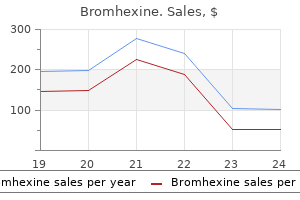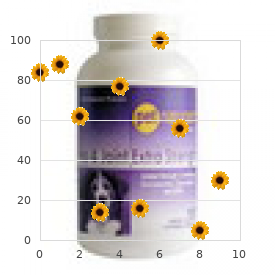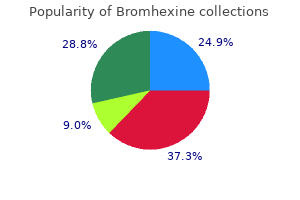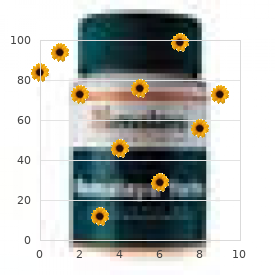Only $0.91 per item
Bromhexine dosages: 8 mg
Bromhexine packs: 30 pills, 60 pills, 120 pills, 240 pills, 300 pills
In stock: 886
9 of 10
Votes: 284 votes
Total customer reviews: 284
Description
Typically 9 medications that cause fatigue proven bromhexine 8mg, the patient believes others are stealing his money or trying to defraud him. Memory falsifications of various types occur in schizophrenia, depressive illness, antisocial personality disorder and obsessional states. The more definite, fantastic and gap-filling features of organic confabulations are always associated with memory defect. Central to the idea of confabulation is therefore a notion of false reports in the context of memory disorder. The issue of distortions of temporal context has perhaps been understated in the literature. It refers to the finding that in confabulation there are often recollections of true events but that are incorrectly orientated in time and place. In other words it is an impairment of the chronologic order of events, what might be termed an impairment of temporal order or source monitoring. The confabulatory recollection, also, often includes additions, distortions or elaborations that either actually or plausibly occurred (DeLuca, 2009): Doctor: What did you do today Then I came to the rehabilitation institute, no I actually went to Jimsburg store and we had a small meeting there. The example first illustrates content distortion because the patient had been in hospital for several months without going home and, second, impaired temporal context because the patient had owned Jimsburg store many years before and had sold it. The current view is that memory confabulation usually derives from dual lesions taking in basal forebrain areas and frontal executive systems. These lesions appear to result in impaired strategic retrieval of memory and disturbed verification/monitoring of the abnormal memory output (DeLuca, 2009). Perseveration is defined as a response that was appropriate to a first stimulus being given inappropriately to a second, different stimulus. Memory Impairment in Schizophrenia Earlier writers tended to play down the significance of intellectual impairment in schizophrenia (Bleuler, 1911; Kraepelin, 1913). However, decline in intellectual performance (Rogers, 1986), impairment in neuropsychological test batteries (Taylor and Abrams, 1984), sometimes a dementia-like syndrome (Liddle and Crow, 1984) and substantial memory deficit (Cutting, 1985; McKenna et al. Memory deficit has been shown not to be restricted to patients with chronic schizophrenia. There are deficits in long-term memory, including evidence of impaired retrieval in both recall and recognition. There is also evidence of impaired short-term memory, demonstrated by deficit of forward digit span. Furthermore, there is evidence of impairment of working memory and semantic memory, but procedural or implicit memory is intact.

Serpiria (Indian Snakeroot). Bromhexine.
- Are there safety concerns?
- How does Indian Snakeroot work?
- What is Indian Snakeroot?
- Dosing considerations for Indian Snakeroot.
- Nervousness, trouble sleeping (insomnia), mental disorders such as schizophrenia, constipation, fever, liver problems, joint pain, spasms in the legs due to poor circulation, mild high blood pressure, and other conditions.
- Are there any interactions with medications?
Source: http://www.rxlist.com/script/main/art.asp?articlekey=96766
This is important to prevent contamination from water or dirt symptoms week by week buy bromhexine 8 mg otc, regardless of whether the cylinder contains gas or is empty. Cylinders should be "cracked" before attached to the sedation or anesthesia machine. The term cracked signifies opening the cylinder just slightly, allowing some gas to escape, thereby blowing out any particles of dust that may have lodged in the orifice of the cylinder. The importance of keeping grease and oil away from compressed gases is so great that additional comment is required. Grease or oil in the presence of a compressed gas forms a potentially explosive mixture. Sudden expansion of the compressed gas as it exits the cylinder cools the gas to subzero temperatures. However, almost immediately, as more gas rushes from the cylinder into the restricted space of the reducing valve, both the pressure and temperature are increased. The temperature may increase sufficiently, albeit for only a few seconds, to ignite any combustible materials that may be present. Temperatures in excess of 815° C (1500° F)-well above the ignition temperature of grease or oil-can be produced at this time. Once the grease or oil ignites, either N2O or O2, although nonflammable, will support combustion. Temperature and pressure within the cylinder increase even further, producing two grave problems: (1) the rapid increase in pressure will soon exceed the limits of the cylinder, leading to an explosion; and (2) as the temperature within the cylinder increases, the valve stem of the cylinder, composed of an alloy with a melting point of 93° C, will melt, thereby releasing the contents of the cylinder. Death and serious injuries to the dentist, staff, and patients have occurred in this manner. In inhalation sedation with N2O-O2, the cylinder sizes used are the "E," "G," and "H. The physical characteristics of these and other compressed-gas cylinders are compared in Table 14. Safety features incorporated in the compressed-gas cylinders include color coding (N2O, blue; O2, green) and the pin index Cylinders are designed to handle 1. For example, an O2 cylinder usually under 2000 psig is designed to hold up to 3400 psig. In addition, the American Society of Anesthesiologists, the American Hospital Association, and the medical gas industry have adopted a uniform color code that is used on all compressed-gas cylinders (Table 14. The agents used in inhalation sedation, N2O and O2, are color-coded light blue and green, respectively, in the United States. The following are important considerations for handling compressed-gas cylinders: 1. Use no grease, oil, or lubricant of any type to lubricate cylinder valves, gauges, regulators, or other fittings that may come into contact with gases. The pin index safety system is designed to make it physically impossible for an N2O cylinder to be inadvertently attached to the O2 portion of the delivery system and vice versa. This is achieved through a series of holes in the stem of the cylinder that have a unique configuration permitting attachment only to the correct yoke on the sedation unit.

Specifications/Details
The reason for insisting on a minimum of 3 to 5 minutes of 100% O2 at the end of the procedure is to decrease the possibility of diffusion hypoxia medications quiz discount bromhexine 8mg fast delivery. Diffusion hypoxia can occur when the N2O exits through the lungs at a much faster rate than the nitrogen (N2) that replaces it, thereby diluting and reducing the O2 supply and blood saturation. The position of the patient is altered from the supine or semisupine (during dental treatment) to a more upright one as recovery continues. Any reply other than "I feel perfectly normal" or "I feel the way I did when I arrived in the office" indicates the need for additional O2. The nasal hood, providing O2, should be left on the patient for an additional 2 to 3 minutes, and the question then repeated. The patient should not be discharged while any signs or symptoms of sedation remain. In those cases in which N2O-O2 was used in combination with other sedation techniques (oral, rectal, intranasal, intramuscular, or intravenous), the patient must have a responsible adult in attendance to escort him or her from the office. Vital signs to be measured and recorded on the sedation record include blood pressure, heart rate and rhythm, and respiratory rate. Two other factors that may be evaluated are (1) the time required for the patient to complete the test. The patient is returned to the same position he or she was in for the preoperative test and is reminded to carefully complete the test by connecting all the dots; the results are then evaluated. The patient may miss more or fewer dots than preoperatively; however, the numbers should be close. Seven missed dots after sedation with five dots missed preoperatively is not significant, provided the time and quality of the lines are approximately the same as they were earlier. Use of the Trieger test with patients during their sedation procedure is interesting. This is not more likely to occur with the use of N2O-O2 than with other sedation techniques or when no sedation is used. It is merely good practice to be prepared for this potentially dangerous situation that can develop in any patient following prolonged recumbency (the time required varies from patient to patient) or in patients receiving certain drugs, especially antihypertensives. It is not unusual for a patient to feel normal while seated in the dental chair and then lightheaded upon first standing. If this happens, the patient should be placed back in the chair, O2 administered for several more minutes, and the patient then allowed to try to stand again. The patient should never be permitted to leave the office if any signs or symptoms of sedation remain.
Syndromes
- Blood clot to the lung
- High blood pressure in the lungs (pulmonary hypertension)
- Language problems, such as trouble finding the name of familiar objects
- Biopsy of the tumor
- Fecal fat test
- Exercise

This is evidenced by the fact that those contemporary recent graduates surveyed would support an increase in tuition and fees to gain more medicine park cabins buy 8mg bromhexine with amex, or even any, advanced pain control knowledge while in school. All the current dental models of anesthesia delivery mentioned earlier have been shown to be safe and effective. Mutual respect and collegial cooperation between dental groups, currently struggling against economically competing dental colleagues to maintain their anesthesia status quo from perceived threats within the profession, would lead to synergistic and exponential growth of anesthesiology in dentistry. A specialty would also be the most effective buffer against compromising attacks from nondental anesthesia providers. Compromise will likely occur from timely opportunistic pressure exerted by significantly more numerous anesthesia provider groups outside of dentistry (Table 41. Of course, legal colleagues will be more than willing to continue to adjudicate the controversies. Dentists administer more local anesthetics and general anesthetics per trained provider than any other health profession. Dentists perfected outpatient general anesthesia techniques decades before their medical colleagues even considered outpatient general anesthesia a reasonable option. Dentist anesthesia providers have at least equivalent, if not better, morbidity and mortality statistics compared with other professions providing anesthesia services. Throughout the United States, state dental boards have fully implemented statutes designed to ensure the qualified provision of dental anesthesia, whereas such statutes are currently in place in only a few states for medicine. Yet when one looks at the relatively minimal patient-perceived presence of dentistry in the anesthesia world, it is apparent that dentistry has not handled its gift of pain control to the world with the fiduciary care anesthesiology should have been afforded. Before this publication, no such accreditation was possible for the many decades that dentists were trained in general anesthesia. For instance, each resident must do a minimum of 500 deep sedations or general anesthetics, 200 of which must be intubated general anesthetics, and at least 50 must be nasotracheal intubations, and 20 cases must incorporate advanced airway techniques, such as fiber-optic intubation, laryngeal mask airway, etc. A minimum of 100 cases must be for children 6 years old or younger, and 50 cases must be for special-needs patients. There are three major benefits to the profession that will be derived from the accreditation of dentist anesthesiologist residency programs97: 1. Because there is a huge increased need and demand for dentists to provide advanced sedation and anesthesia services for other dentists, accreditation should provide increased funding opportunities to support more residents and residency programs to meet that need and demand. Accreditation by dentistry helps cement anesthesia at its highest level as within the scope of dental education and within the scope of the clinical practice of dentists. To describe, delineate and differentiate these conditions, the morbid psychological phenomena that constitute the subjective experience of patients need to be carefully assessed, elicited and recorded. In other words, descriptive psychopathology is concerned with the selection, delimitation, differentiation and description of particular phenomena of experience, which through the use of accepted terminology become both defined and capable of repeated identification. It can be said that descriptive psychopathology is the fundamental professional skill of the psychiatrist; it is, possibly, the only diagnostic skill unique to the psychiatrist. It is considerably more than just carrying out a clinical interview of a patient or even listening to the patient, although it necessarily involves both of these. Its accurate application involves the deployment of empathy and understanding (we shall return to these later).
Related Products
Additional information:
Usage: t.i.d.

Tags: generic 8 mg bromhexine mastercard, bromhexine 8 mg visa, order 8 mg bromhexine, cheap bromhexine 8mg buy
Customer Reviews
Real Experiences: Customer Reviews on Bromhexine
Ketil, 29 years: Rigid chest has been observed in conjunction with the fentanyl and N2O combination. This time may be saved by requesting the patient to void, if necessary, before treatment commences. As demonstrated in the stressreduction protocols (see Chapter 4), the recognition and management of anxiety must start before dental treatment commences. In Miller R, ed: Anesthesia, ed 4, New York, 1994, Churchill Livingstone; and Muravchick S: Geroanesthesia: Principles for management of the elderly patient, St.
Marik, 47 years: Once the child begins to awaken, the recording intervals may be increased to 10 to 15 minutes. Most often, the dysrhythmias seen are tachydysrhythmias associated with elevations in blood pressure. Other inhalation anesthetics, such as halothane, cyclopropane, chloroform, diethyl ether, divinyl ether, ethyl vinyl ether, fluroxene, methoxyflurane, and trichloroethylene, are no longer commonly used in general anesthesia. Once blood returns into the tubing, signifying successful entry into the vein, the angle of the needle is decreased so that it is held almost parallel to the skin and slowly advanced several millimeters into the vein.
Kamak, 35 years: The art of semantics therefore plays an important role in communication between the dentist and patient. Postural hypotension is most likely to be noted with morphine and meperidine (which provoke the greatest release of histamine). E, the esophageal stethoscope, is inserted into the esophagus during general anesthesia, providing excellent sound quality for both heart and lung sounds. A female patient with schizophrenia, aged 38, wrote the following: Two men are controlling the brain through telethapy [sic] or by means of ways of the spirit who open and closes the back channels of my brain releasing words and holding back the truth, by no means will I speak but will answer only to written questions by means of writing, knowing full well the channels of my brain is filtering and only half of what is the truth, also I knowing I am being read not only by a few but many very clever people but not at all acceptable they make people believe that I am some kind of miracle which I am not, I only hold the name Holyland which came to me by marrying Alfred Holyland, only by doing this do they wish to make some false stories of me coming from some special place which I have not.
Nerusul, 63 years: Not only does N2O-O2 minimize any increase in myocardial activity as a result of its sedative and analgesic properties, but also the typical patient will receive more than 50% or, at the very least, approximately 30% O2. Finally, in 2013 the federal government issued a singular dentist anesthesiologist taxonomy number (1223D0004X). In African Americans, the incidence of sickle cell anemia at birth is 1 in 600, and the incidence of all genotypes of sickle cell disease is 1 in 300. Paakkari P, Paakkari I, Landes P, et al: Respiratory m-opioid and benzodiazepine interactions in the unrestrained rat.
Marcus, 56 years: Narcoleptic attacks are short episodes of sleep (1015 minutes) that occur irresistibly during the day; they usually begin during adolescence and persist throughout life. Should these develop, management requires the administration of diphenhydramine (see Chapter 7). Scopolamine was one of the first drugs employed transdermally in the management of motion sickness. These images are uneven, with the level of detail depending on the degree of visual attention (Smith and Kosslyn, 2007).



